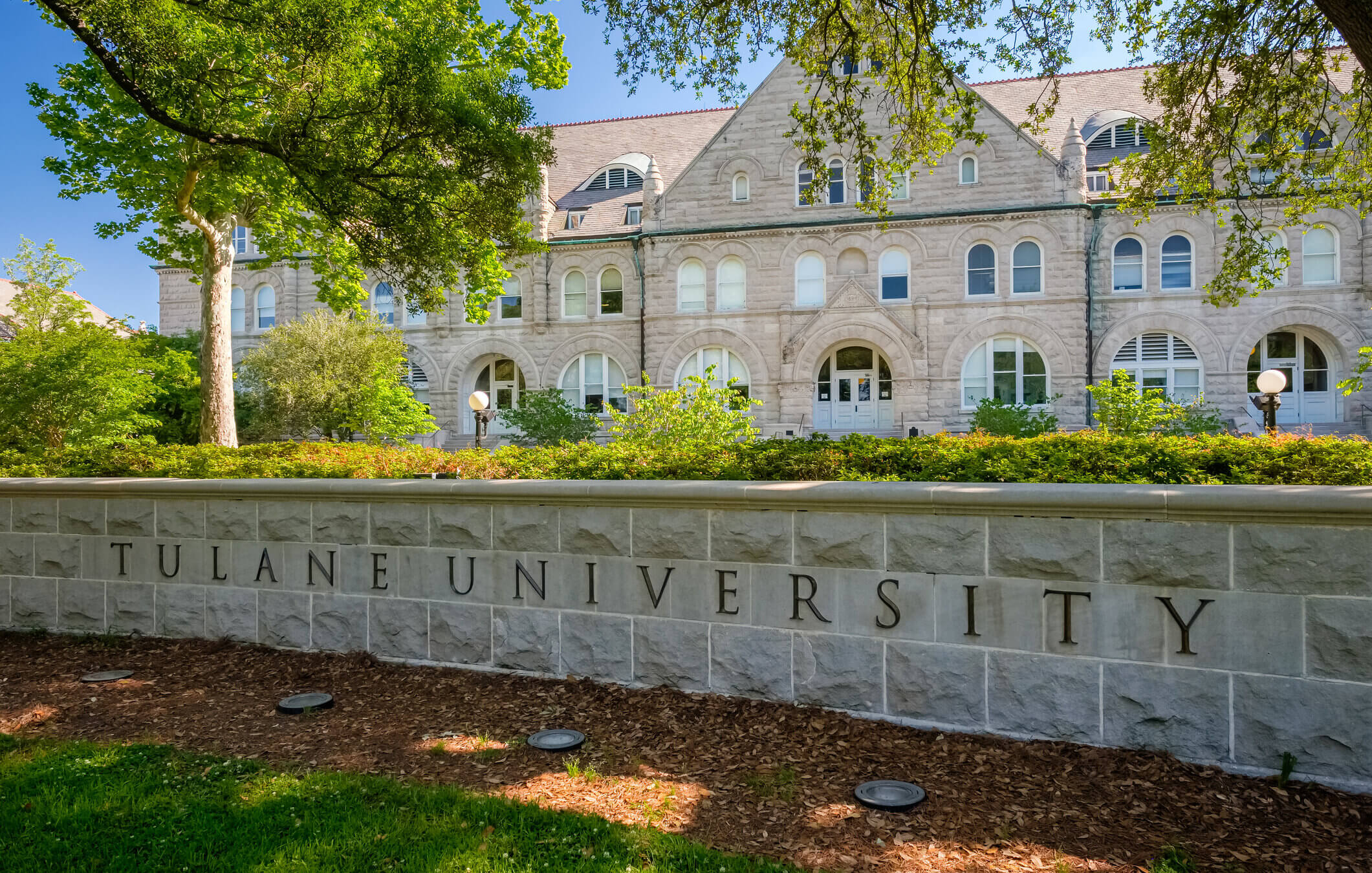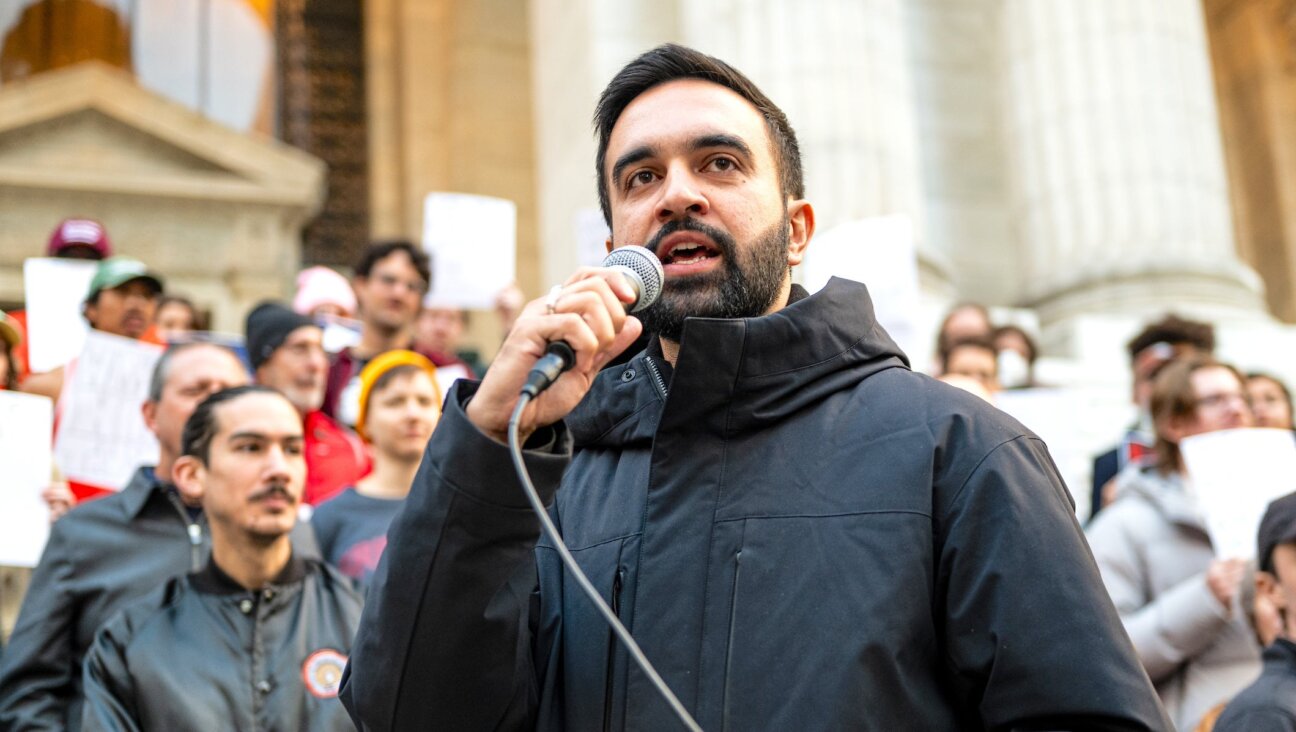New Brandeis survey of 51 colleges assesses Jewish students’ experiences of antisemitism
UPenn, Columbia among worst offenders while Tulane and five Florida schools are deemed among the least hostile

Tulane University was one of 12 schools out of 51 found to have the “least hostile” antisemitic environments in a new survey by Brandeis. Photo by iStock
A new survey of Jewish students found that where they attend college makes a difference in whether and to what extent they encounter antisemitism.
The survey of nearly 2,000 Jewish undergraduates at 51 U.S. schools with significant Jewish populations, published Thursday, was conducted online by Brandeis University between Nov. 19 and Dec. 11.
Columbia, the University of Pennsylvania and three University of California campuses were among the survey’s worst offenders. The list of schools with the least hostile environments included Tulane in New Orleans, Washington University in St. Louis and five schools in Florida.
The study was timed to measure the impact of Hamas’ Oct. 7 attacks and Israel’s war on Gaza. That conflict has led to a surge in antisemitism and antiwar activism around the U.S., including pro-Palestinian protests and antisemitic incidents on many college campuses.
The students surveyed were drawn from applicants to Birthright Israel, which provides free trips to Israel for young people with Jewish heritage.
Researchers grouped the 51 schools in four categories, from the most to least hostile antisemitic environments, but schools were not ranked within each of the categories.
“Culture, policies, and other characteristics matter when it comes to fostering a safe and welcoming environment toward Jewish students,” the researchers wrote.
Findings differ from campus to campus
Lead investigator Leonard Saxe, director of Brandeis’ Cohen Center for Modern Jewish Studies, said he was surprised at how big the differences were from campus to campus.
At the 12 schools with the most hostility, 85% of Jewish students reported at least some hostility toward Jews and 94% reported hostility toward Israel. In comparison, at the 13 schools deemed to have the least hostile antisemitic environment, only 49% of Jewish students reported any hostility toward Jews, while 63% reported hostility toward Israel.
(There is an ongoing debate over how to define antisemitism in relation to Israel.)
And while 57% of students in the most hostile environments said they were “very concerned” about on-campus antisemitism, only 23% were very concerned at the least hostile schools.
A few findings may reassure worried parents. Fewer than 2% of students overall experienced an antisemitic physical attack, and this did not vary significantly between schools. And regardless of campus, only 15% of respondents reported that concerns about antisemitism impacted their daily life “often,” though 9% reported that these concerns impacted their daily life “all the time.”
The worst offenders
The 12 schools with the “highest levels of antisemitic hostility” out of the 51 surveyed, in alphabetical order, were:
- Boston University
- Columbia
- George Washington University
- New York University
- Ohio State-Columbus
- Queens College (part of the City University of New York)
- UC-Berkeley
- UCLA
- UC-San Diego
- University of Pennsylvania
- University of Michigan-Ann Arbor
- University of Wisconsin-Madison.
Saxe noted that several of those 12 schools have been in the news for pro-Palestinian activism or antisemitic incidents in the weeks since Oct. 7. “I wonder to what extent them being in the news has exacerbated the problem,” Saxe said.
Columbia, for example, has been wracked by protests and walkouts. At GWU, pro-Palestinian slogans, including one that appeared to glorify terrorists, were projected on the library. UPenn’s president resigned after saying that calling for the genocide of Jews might be permitted under the school’s code of conduct depending on the context.
The other 39 schools
At the other end of the scale, the 13 schools listed as having the least antisemitic hostility, were:
- Brandeis
- California Polytechnic State University
- Duke
- Florida Atlantic University
- Florida State
- Penn State
- Tulane
- University of Central Florida
- University of Colorado-Boulder
- University of Delaware
- University of Florida
- University of Miami
- Washington University (in St. Louis)
In the second-best category, the 13 schools with “below average” levels of antisemitic hostility were:
- Indiana University-Bloomington
- Michigan State
- Northeastern
- San Diego State
- Syracuse
- Temple
- University of Arizona
- University of Georgia
- University of Maryland-College Park
- University of Pittsburgh
- University of Texas-Austin
- University of Virginia
- Vanderbilt.
And just ahead of the worst offenders were 13 schools with the second-highest levels of antisemitic hostility:
- Baruch College (part of CUNY)
- Binghamton University (part of the State University of New York)
- Cornell
- Emory
- Northwestern
- Rutgers
- Tufts
- UC-Davis
- UC-Santa Barbara
- University of Illinois-Urbana/Champaign
- University of Massachusetts-Amherst
- University of Southern California
- University of Vermont.
Respondents drawn from Birthright applicants
To conduct the study, researchers contacted 22,735 people who applied to take a Birthright Israel trip this year. They drew from Birthright applicants because the program attracts young Jews with “varying levels of prior engagement with Jewish life.” Of the 1,963 people whose data was used, 19% had no formal childhood Jewish education and 25% had attended Jewish day school.
About 20% of all U.S. Jews ages 18-46 have participated in a Birthright Israel trip.
Schools where there were not enough Birthright applicants to allow for reliable data were not included. (Harvard has repeatedly made headlines over allegations of on-campus antisemitism, but it was not among the 51 schools whose students were surveyed.) Students who applied for Birthright were included whether or not they ended up taking a Birthright trip.
Researchers asked respondents about three things: their perceptions of anti-Jewish and anti-Israel hostility on their campuses, and their concerns about antisemitism at their schools. The responses to those questions turned out to be highly correlated, so they were combined into the overall measure of the students’ perceptions of antisemitic hostility at each campus.
Most hostility comes from other students
Eight out of 10 students at the most hostile schools said that hostility came from other students, while 30% said it came from faculty.
A third of students at those high-hostility schools said they felt like they “very much” belonged on campus, and only a quarter felt safe or comfortable. In contrast, 43% of Jewish students at schools categorized as least hostile felt “very” safe, nearly half felt “very” comfortable, and more than half said they felt “very much” like they belonged.
At schools with higher levels of antisemitic hostility, 24% of students said they’ve experienced antisemitism in person on campus. But even at the schools with the lowest levels of antisemitic hostility, 14% percent of students reported encountering an antisemitic insult or antisemitic harassment in person in the past three months.
Left vs. right
The survey found that students were more concerned about antisemitism from the political left than from the political right. More than half the students surveyed described themselves as liberal, and 41% of those liberal respondents said they were very concerned about antisemitism from the political left.
The finding aligns with the growth of pro-Palestinian activism on the left, some of which has been tinged with antisemitism. Much of it has condemned Israel and embraced anti-Zionism, which many mainstream Jewish groups believe is antisemitic.
But the researchers pointed out that Jewish students in this survey probably have fewer opportunities to be exposed to antisemitism from the right, given that many of the schools included are politically liberal.
Harassment, social media, stereotypes
At schools with the highest levels of perceived antisemitism, Jewish students were “more likely to report experiencing insult or harassment in person and on social media,” including “seeing antisemitic images, slogans, or graffiti.”
At schools with the lowest levels of hostility, only 9% of respondents reported that they were frequently blamed for the Israeli government’s actions, compared to 28% of students who said they were blamed at schools with high levels of hostility.
Students at all schools were also more “concerned about antisemitism related to criticism of Israel than they were about antisemitism related to traditional anti-Jewish stereotypes.”
Survey goal: Help campuses become safe
Brandeis has been conducting similar surveys for 20 years. Some levels of antisemitism reported in this survey were twice what the last survey detected in 2016.
Saxe said the purpose of the report is “not to write the U.S. News & World Report guide to which campuses you should send a Jewish student to, but rather to help all campuses become safe places and productive educational environments for Jewish students.”
He noted that Duke, now among schools with the least antisemitism, had in the past been a “target of investigation, but they’ve done a number of things to make the campus a better environment for Jewish students.”
The report said engaging faculty in educational programs with multiple perspectives about the history of the Israeli-Palestinian conflict is among the steps that can help improve campus culture.
Methodology
Researchers adjusted responses from different schools to account for the number of students who responded to the survey. They did not provide a margin of error but said the differences identified in the study were statistically significant, and that grouping schools into four categories rather than ranking them individually avoided bias due to small samples.























